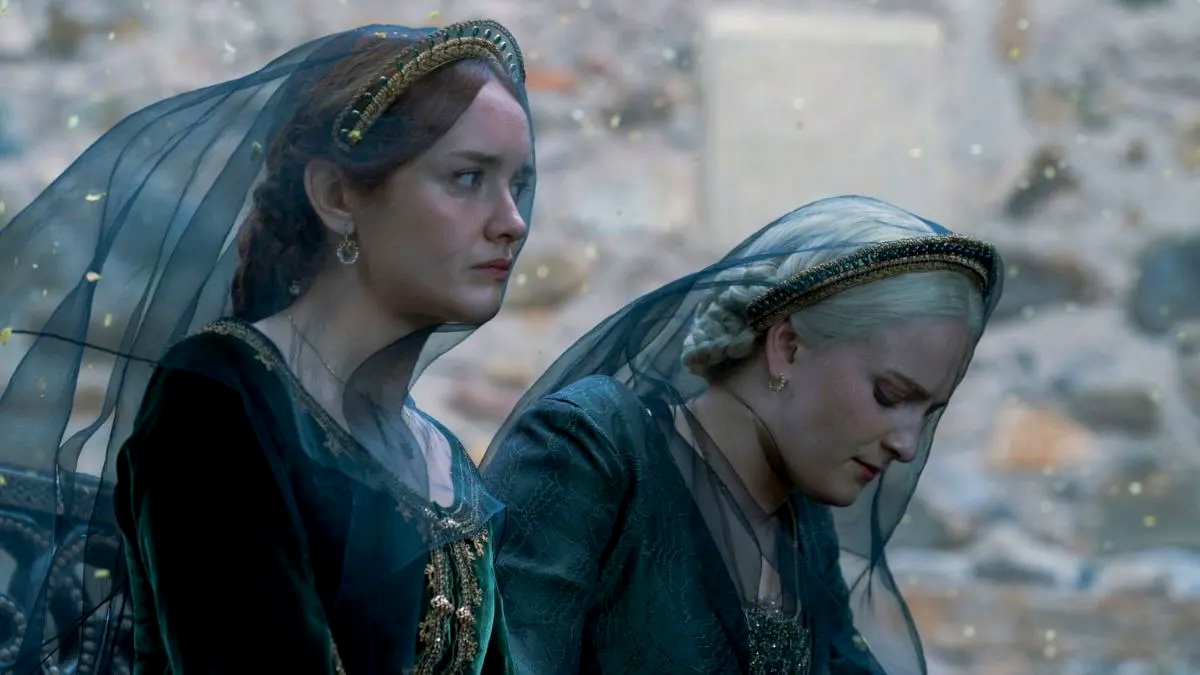‘House of the Dragon’ Is at Its Best When Its Horror Isn’t Brutally Violent

Much like its predecessor, one of House of the Dragon’s biggest albeit most controversial strengths is its unwillingness to shy away from the world’s brutality. This is a violent show. Characters, both minor and major, are ripped apart, burned alive, hung, stabbed, poisoned, and beheaded. Some deaths are par for the course while others stick with you forever.
Death and violence are an intrinsic part of House of the Dragon. I would argue, however, that the show’s true strength often lies in how it deals with the consequences of that violence rather than the violence itself. Not all horror is necessarily reliant on blood and gore. Sometimes, it’s the quiet moments of grief, the way characters are manipulated and shunned and abused in the aftermath of Westeros’ trademark savagery that truly leave you feeling sick and horrified.
**Major spoilers ahead for House of the Dragon season 2, episodes 1 and 2.**
One scene in House of the Dragon’s latest episode, “Rhaenyra the Cruel,” exemplifies this perfectly. In the hours following Prince Jaehaerys Targaryen’s barbaric death, King Aegon II’s Green Council comes together to discuss the ramifications of the heir’s demise. Otto Hightower, the Hand, decides that the best course of action to get the common folk on their side is to show them the family’s grief and despair in the wake of the murder. Of course, this suggestion is already emotionally incomprehensible to us as an audience, but what makes it even worse is when Helaena, the child’s mother—who was forced to point her son out to the murderers and watch as they cut into his body—is sent out to ride through the streets.
Helaena is House of the Dragon’s most morally innocent character. She’s introverted, she’s shy, she’s been forced into an incestuous marriage with a brother who cares very little for her wellbeing, and she’s plagued by inexplicable visions and prophecies that come true more often than not. She doesn’t know how to deal with pressure, with crowds of women crying over a child they never met, being poked and prodded while sat on a cart, watching as her son’s hastily sewn-together body is ready to slide off his transport and into the muddied streets. It’s not just that I felt sorry for her, though that was certainly part of it—it’s that I could physically feel myself recoiling from the stress Helaena was under, that sense that she was trapped within this massive crowd with no way to escape her grief or her terror.
Very few of House of the Dragon’s or Game of Thrones’ most gruesomely violent scenes have had that same effect on me. I might avert my eyes, I might gag in disgust, but that’s nothing compared to the true visceral, emotional torment that Helaena was experiencing on screen.
Interestingly enough, the way I felt as I watched Helaena struggle reminded me of how I felt when Game of Thrones’ Cersei Lannister was paraded naked through the streets for the crowds to laugh and jeer at, too. Of course, Helaena is, on the whole, a much more likeable character—likeable in the sense that you can root for her without feeling like your own ethical values are being compromised, whereas Cersei was a “likeable” character because she was so terribly compelling—but Cersei’s humiliation also made me feel like I was crawling out of my own skin. It’s a different kind of abuse, but it’s still abuse all the same. Cersei was physically and verbally assaulted because the people hated her, while Helaena was similarly gawked at and attacked by people who would never truly know her, her son, or what she went through.
In true House of the Dragon and Game of Thrones-like fashion, House of the Dragon season 2, episode 2 ends with an oppressively cruel fight, this time between twin brothers. Ser Arryk and Ser Erryk Cargyll were forced to fight each other to the death, slicing each other up piece by piece until they both bled out on the floor of Rhaenyra’s bedchamber. Was it hard to watch? Sure. Did the fight have an emotional climax? It did. And yet the difference between the two scenes is stark. I can imagine the depth of Helaena’s stress and grief, and it affects me emotionally. I can see myself in her shoes. I can’t see myself being thrust into a swordfight to the death, and so the brutality of the kill loses some of its impact.
This isn’t to say that House of the Dragon’s violence is superfluous. Quite the opposite, as it often informs the viewer of a character’s loyalties, ambitions, relationships, and morality. I do however think that this episode perfectly demonstrates that terror can be both physical and emotional, and House of the Dragon produces some of its best work when it leans into the latter.
Have a tip we should know? [email protected]
